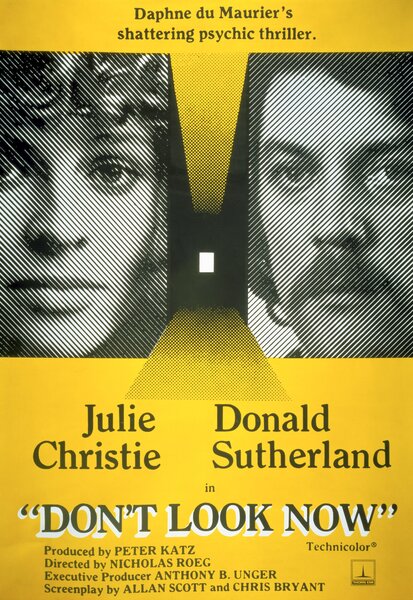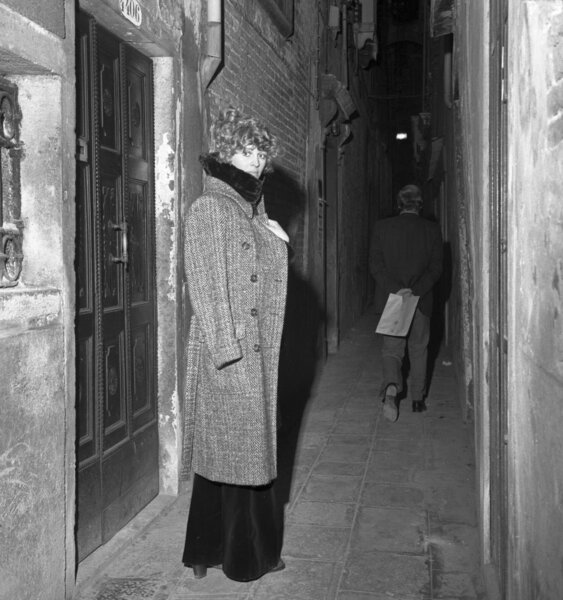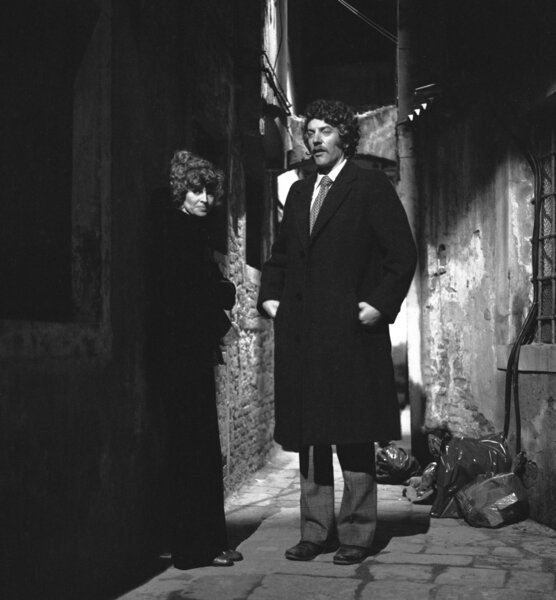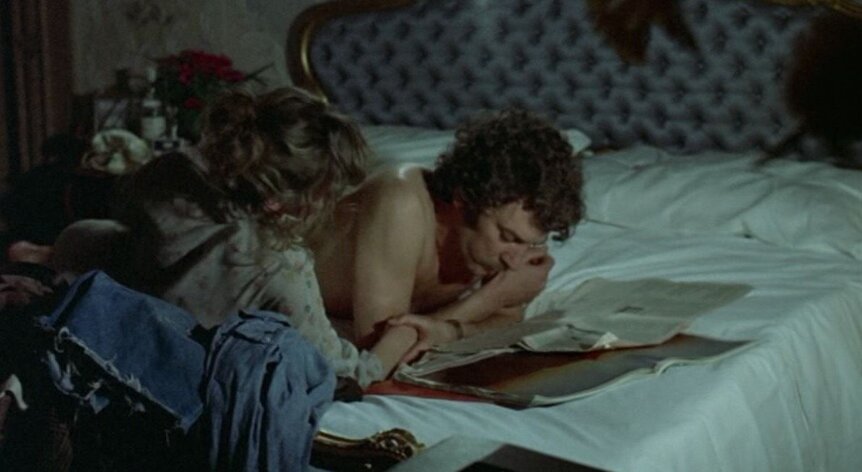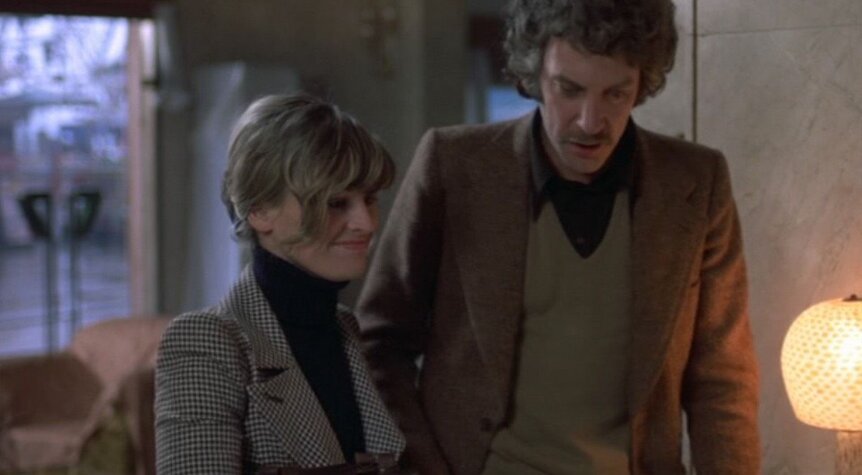Create a free profile to get unlimited access to exclusive videos, sweepstakes, and more!
The portrayal of motherhood, grief, and sex in Don't Look Now
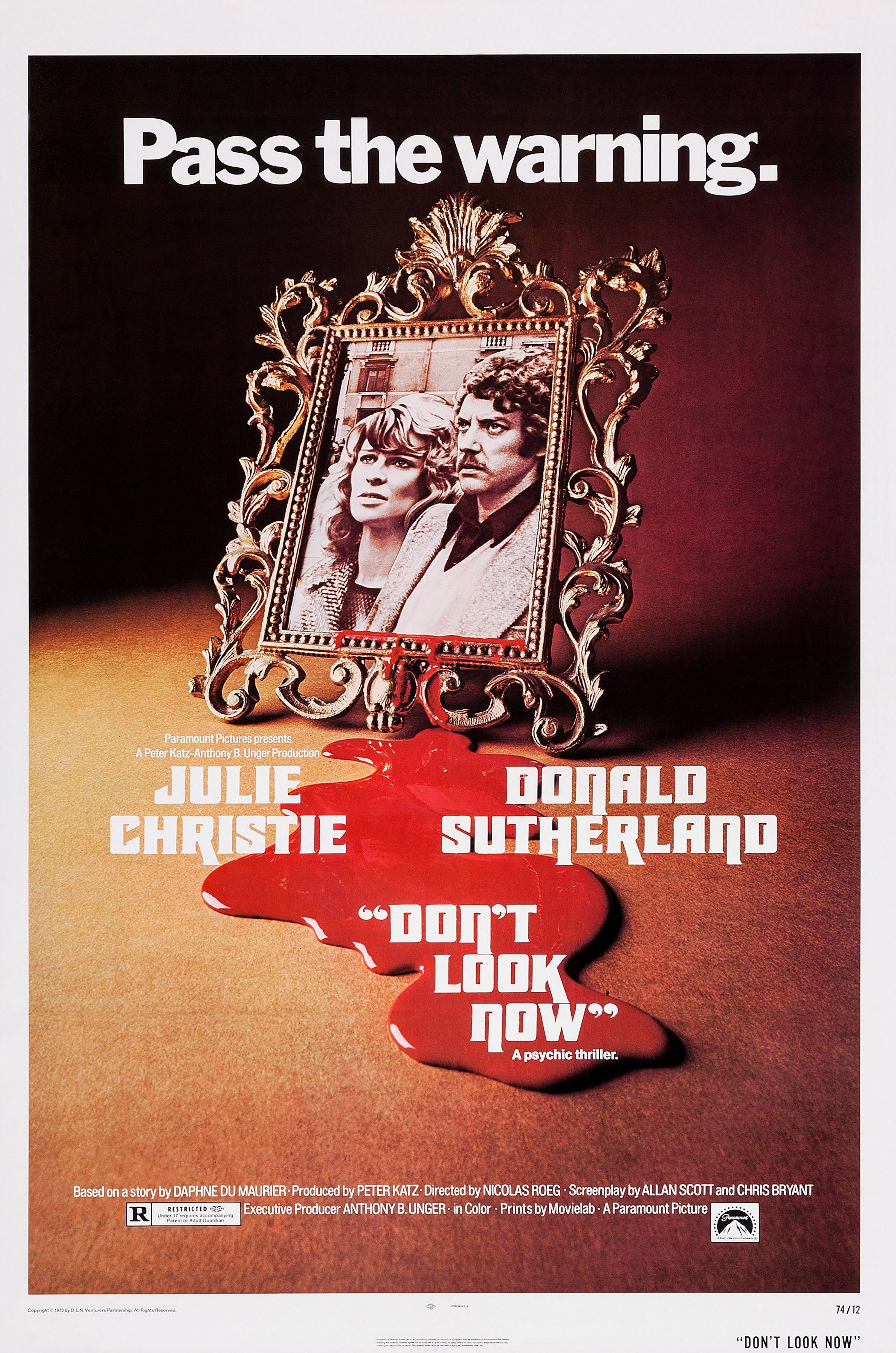
Venice is for lovers, or so say the many travel brochure images of romantic gondola rides, Renaissance-era architecture, and leisurely sunset strolls. It's a city built on canals, where cars are replaced with networks of watery roads delivers an other-worldly atmosphere. In the 1973 psychological thriller Don't Look Now, the Italian location is referred to as "a city in aspic, left over from a dinner party, and all the guests are dead and gone." Any notion of wonder is replaced with a domestic facade laced with horror.
This isn't the Venice of honeymooners; instead, it is a work trip doubling as an exploration of shared grief after the death of Laura (Julie Christie) and John Baxter's (Donald Sutherland) young daughter in a drowning accident. Nevertheless, there is a love story beneath the anguish. One of the most famous sequences from Don't Look Now is an intimate one, which has spawned rumor and legend because of how realistic it looks. Grief, motherhood, and sex are all entwined in this depiction of family trauma with a supernatural twist.
An idyllic English countryside setting on a dreamy Sunday afternoon is shattered when Christine (Sharon Williams) drops her ball in the pond, falls in, and dies. It's a ball that Laura eventually takes to keeping in her suitcase while in Venice — keeping her daughter close. The quick cuts between inside and out set the tone, showcasing how the mundane can quickly shift into a life-changing event. As John says to his wife, "Nothing is as it seems." In the cozy living room a fire burns, Laura sets about finding an answer to Christine's question about frozen lakes while John works. It is an image of domestic bliss with nothing out of the ordinary until John leaps to his feet and runs out of the house. When his wife comes outside to see what is going on, the pastoral visage is immediately destroyed by the mud-covered limp wet body her husband is cradling. Laura's face is framed by a perfect manicured red rose bush behind her, and a guttural scream breaks the countryside harmony.
Nicolas Roeg's seminal movie, based on a short story of the same name by Daphne du Maurier, takes a fluid approach to storytelling as the past, present, and future interconnect. The Christine incident will repeat throughout, a fragmented pain that never quite leaves her grief-stricken parents. In du Maurier's version, it is meningitis that kills the young child. It is just as random as the drowning, but there is an element of blame leveled at John by his wife when she later remarks that he let Christine play by the pond; later, while in Venice, they are surrounded by the very thing that killed her. It is a constant reminder for Laura, no matter how hard her husband tries to get her to consider anything else.
A psychic bond exists between John and his daughter, but he refuses to open his eyes to the possibility while Laura is quick to believe even though she cannot "see." When she is told by two sisters that Christine looked happy as she sat next to them at lunch, Laura is so overcome that she passes out and takes the contents of the restaurant table down with her. This "episode" is a breakthrough moment for Laura that John later refers to when he believes his wife is in danger, implying that since they lost their daughter she has been missing a part of who she is. There is an impatience in John's tone that she can't move on from something as traumatic as this. Her grief has been all-consuming.
Emotionally, they take on traditional gender roles; John sees this incident as one they need to get over and ignore, whereas Laura wants to confront the experience head-on. She has been taking pills — which her husband encourages her to start taking again — and he later notes she has had "some complications." After their big fight, he agrees that she is suffering from an illness, but when he isn't looking she hides the pill up her sleeve. He also refers to her as "not a well woman," as if the loss of their child is a sickness she can be cured of. Grief is an individual process, but the way this husband and wife are addressing their pain is polar opposites. His stoicism is at odds with her open emotion.
The idea of the self is also intrinsic to this story. Laura's identity is, in part, wrapped up in her role as a mother — they lost one child, but they still have another. Motherhood performs many functions in horror, whether it is the person causing the trauma (Pyscho, Carrie, Friday the 13th) or the one having it inflicted upon them (Rosemary's Baby, The Exorcist, Hereditary). In Don't Look Now, Laura's identity as a mother is the reason she is in pain. It is more explicit in du Maurier's story; a doctor tells John, "She'll get over it. They all get over it in time. And you have the boy," and John's response is less certain. "I know, but the girl meant everything. She always did, right from the start." The doctor tells John they could always have another daughter, as if this is a prescription for anguish.
A version of this conversation occurs between Laura and the two women she meets at the cafe, one of who claims to see their dead daughter. Having another child is suggested, but not as a replacement, "Nothing can take the place of the one that is gone." Again, this comes across as a gendered remark; a man thinks a Band-Aid baby is a cure, while women know there is no way one child can be swapped out for another.
John thinks his wife is being taken for a ride, but she is far from naive. Instead, she tells her husband she has been struggling to "hang onto herself" and she thinks that if she knows Christine is happy wherever she is, then the excruciating pain she is feeling will subside. These women are helping address the emptiness she has been suffering from. She hasn't stopped being a mother to Christine; her concern for her daughter was not severed by death.
When John observes his wife seemed happy again after the first incident with the two sisters, he doesn't go into specifics but he is also referring to them having sex in the hotel room. The intimate nature of this scene is the stuff of Hollywood folklore. Despite Sutherland and Christie claiming otherwise, rumors persist about whether the sex was simulated or not. Having recently come out of the shower, John lies on the bed naked while Laura is fully clothed as they read the newspaper together. It is the kind of casual behavior of a couple who know each other's bodies — there is no pretense or shyness. Laura takes the lead, slowly tracing a finger down John's bare spine and leg. The intense hunger and ache in this raw portrayal suggest that sex has been off the table for some time.
This scene isn't famous simply for the "did-they-or-didn't-they" speculation. Challenging narrative form and going far beyond titillation, it offers a masterclass in filmmaking. Roeg uses quick edits, cutting between them having sex and getting ready for dinner. One act is mundane while the other delivers a much-needed release for both characters. In the bathroom, Laura appears happy, while John has an air of nervous excitement after this moment of reconnecting. Part of the beauty of this sex scene is the shared pleasure aspect. They are bound together by this awful event, but the love they had before still exists after.
When discussing this infamous scene in 2006, Roeg explained the genesis behind the scene: "Well, I thought that it was needed because they were human and they were in love. Otherwise, they would seem to be disagreeing all the time. And they become people in their own right in the love scene, not characters in a narrative. Just like a couple. It is because of the love they have for each other that she is undefeated at the end. No one can take that love away. Not even death."
Last year, Sutherland also talked at length about this moment, detailing why it has a feeling of authenticity. "There's a scene where they make love in the movie, and it's not voyeuristic. You don't watch people making love. What happens when you watch it is you remember having made love, having been in love yourself."
By today's standards, the scene doesn't read as particularly shocking, but the way it captures intimacy is transcendent — and because it looks like Laura is feeling pleasure, there is this disconnect between it being a scene acted out and one that had to be real. It was like nothing else that had been portrayed in mainstream cinema by that point.
The couple's physical reconnection doesn't cure Laura of her grief or put an end to their bickering, but for one blissful four-and-a-half-minute sequence, they are temporarily able to forget this tragedy. John is so preoccupied with fixing his wife that he doesn't pay attention to any of the warning signs laid out in front of him. By plowing through his sadness via good old fashioned denial, he is emotionally unable to connect the dots. Meanwhile, motherhood equally protects and hurts Laura; it is both her shield against the danger in Venice and the part of her identity that is causing her pain.
Duality runs throughout Don't Look Now in one of the best depictions of traditional family roles and scenarios that contain multitudes. It is a complex exploration of grief, motherhood, and marriage positioning female trauma and pleasure at the center of the story — and still feels transcendent more than 40 years after its initial release.
